Pearls as the most ancient gemstone
Stories of pearls
Pearls require no cutting and polishing to find their best form. Therefore, pearls were loved by the people before techniques for cutting and polishing of stones developed. As one of the most ancient gemstones, the pearl appears in the Bible and various other ancient documents from around the world. Powerful people throughout history have had a passion for pearls; many people in India, South America, and other regions sacrificed their lives to collect natural pearls. The development of pearl cultivation succeeded in reducing inhumane harvesting methods and enabled everyone to own and enjoy pearls.
The birth of cultivated pearls
Kokichi Mikimoto, the father of modern pearl cultivation, was born in Toba city, Mie prefecture. He was fascinated by expensive natural pearls collected by female Ama divers and wondered if it was possible to cultivate these alluring gemstones. In 1888, Mikimoto and Kotaro Ogawa began breeding Akoya pearl oysters in Ago Bay in Shima city. After 5 years of trial and error, Mikimoto succeeded in producing hemispherical pearls (cultured blisters) in 1893. This achievement was a big step for pearl cultivation. In 1907, Tatsuhei Mise, Tokichi Nishikawa and Mikimoto applied for a patent for cultivating spherical pearls. The use of their method spread, and Akoya pearls, which are dmired by people everywhere today, were introduced to the world.
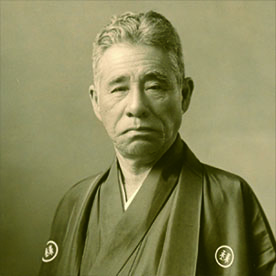
Mr. Kokichi Mikimoto
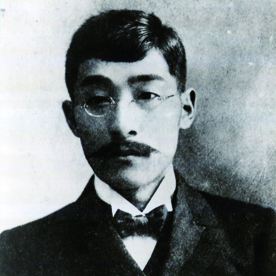
Mr. Tatsuhei Mise
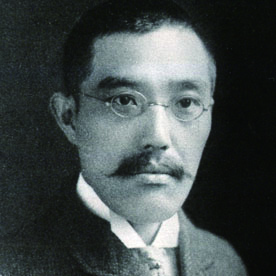
Mr. Tokichi Nishikawa
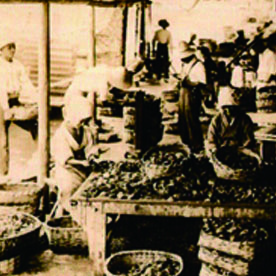
Aquaculture scenery in the Meiji era
From Ise-Shima to the world
As the cultivation of pearls grew, the unique pearl industry also expanded in the Ise-Shima region, which includes traders, processors, and exporters. Everyone in the trade proudly upholds the traditions in this, the home of cultured pearls. Akoya pearls are harvested in the winter when their luster is greatest, and auctions are held around this period. Every December, pearl farmers from around the prefecture gather at a pearl quality competition. Each farmer’s pearls are evaluated for sphericity, color, coating, luster, and flaws. The winner receives the coveted Governor’s Award. The event also draws associations of processors and traders, who hold monthly auctions of processed pearls. The transaction value in Ise-Shima is much higher than in other cities in Japan.
The professionally selected pearls are delivered to domestic and overseas markets. It is no exaggeration to say that Ise-Shima sets the world’s market prices for Akoya pearls. In 2018, Mie prefecture announced “the pearl promotion initiative.” This supports the next generation of farmers and technological improvements. At the entrance of Ago Bay, Mie prefecture Fishery Institute collects and spreads information about sea conditions to support pearl farmers.
Pearl rafts on the sea
Ago Bay in Ise-Shima National park, where Akoya pearls are cultivated, has a jagged coastline of rias. You can find pearl rafts, Ama divers and the grand shrine of Ise-Jingu within this breathtaking view. This view of Ishe-Shima harmonizes the beauty of nature and traditional culture. Shiny Akoya pearls are grown in this beautiful sea. In wintertime, pearl oysters must be migrated to the southern sea, and require magical techniques for implantation. Farmers have to keep the oysters clean, and must pay attention to the water temperature, signs of a red tide…beautiful pearls are made through the cooperation of humankind and nature.
Pearl farming technologies developed in Ise-Shima have now spread to many countries and become an important industry in many places.
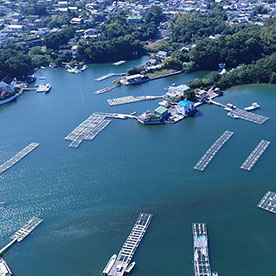
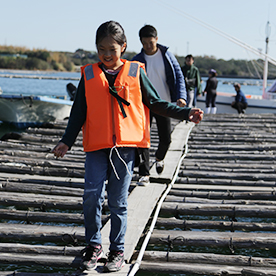
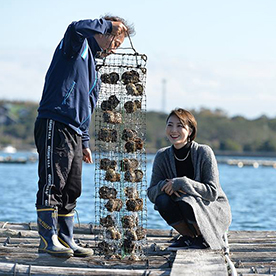
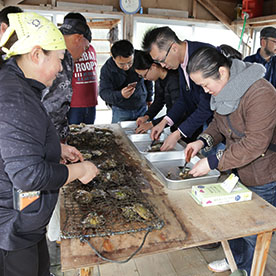
Respect for nature
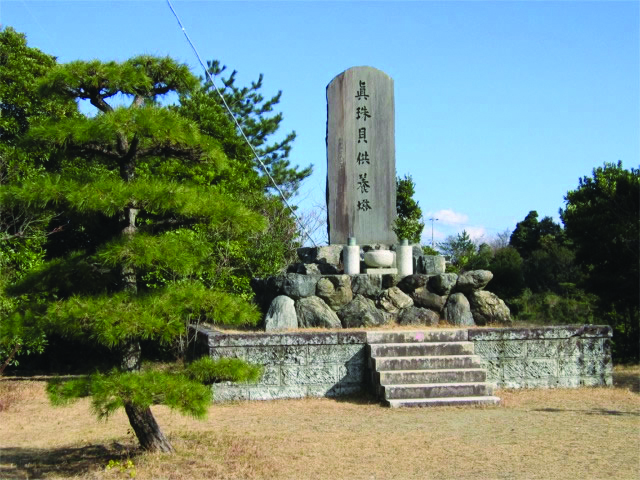
In 2016, the G7 summit was held in Kashikojima of Shima city where the Pearl Oyster Memorial Tower is located in Maruyama Park. Every 22nd of October, pearl farmers and other pearl associated business people gather at this park from all over Japan for a memorial service of pearl oysters. Pearls are natural jewels created within oysters, but the oysters must sacrifice their lives for us. After harvest, oyster shells are used for making buttons and, the oyster’s abductor muscle makes a wonderful delicacy. We always thank oysters and try to use them without any waste.
“Sato-umi” the place nature and mankind live together

In Manyo-shu, poetry collections from the 8th century, Shima was named “Miketsu-Kuni.” The name identifies the region as providing food for Gods. People who live in Shima respect nature and the sea, generation after generation. We call this rich sea “Sato-umi”. In 2017, Ama-divers and pearl farmers were recognized as Japanese Nationally Important Agricultural Heritage Systems by the Ministry of Agriculture, Fishery and Forest. Shima-city strives to maintain this rich “Sato-umi” life, and incorporated SDGs (Sustainable Development Goals) of the United Nations before the rest of the cities in Japan. The Sato-umi project works to preserve nature, through (for example) restoring tidal flats and seagrass beds, and to promote industries and culture associated with this rich natural environment. This is one of the sustainable models for the 21st century.



